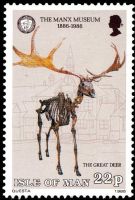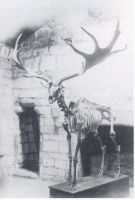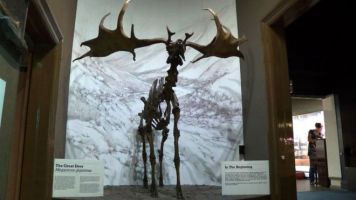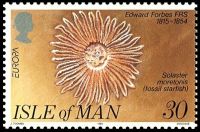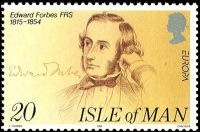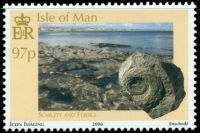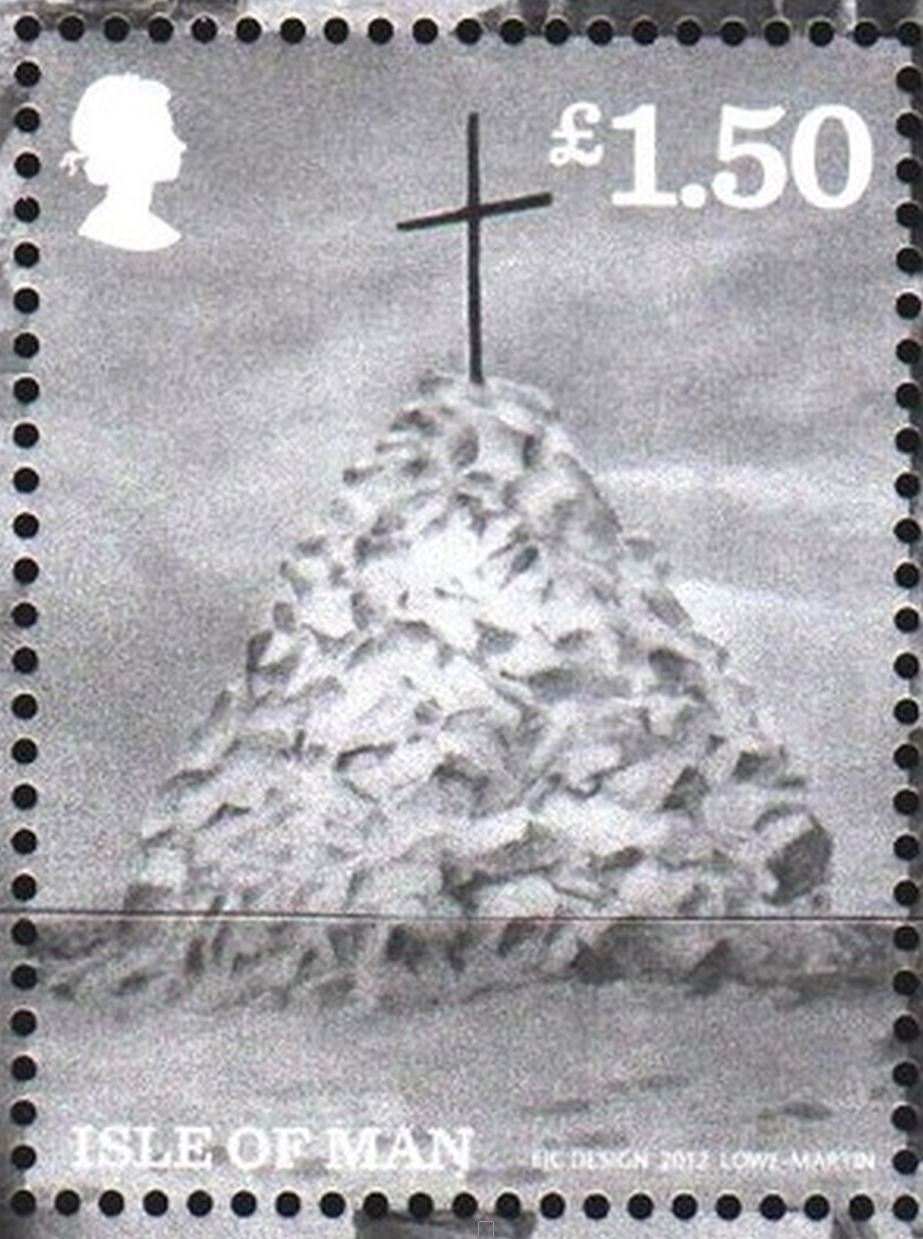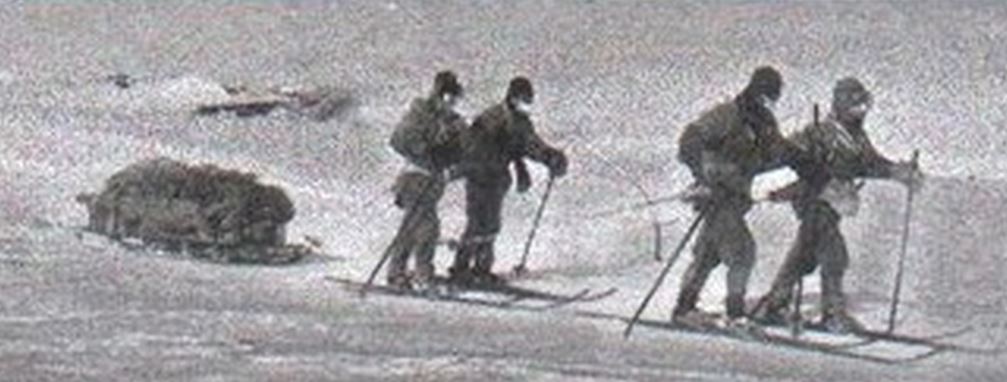the place where Paleontology and Paleoanthropology meets Philately
Isle of Man
Fossils and paleontologists on stamps of Isle of Man
| << previous country | back to index | next country >> |
Contents:
- Country overview
- Philately of the Isle of Man
- Official stamps of the Isle of Man related to Paleontology
- Some other stamps of the Isle of Man to consider
- References
- Acknowledgements
The Isle of Man, also known simply as Man, is a self-governing Crown dependency in the Irish Sea between England and Northern Ireland. The head of state is Queen Elizabeth II, who holds the title of Lord of Mann. The Lord of Mann is represented by a Lieutenant Governor. Foreign relations and defense are the responsibility of the British Government. The island has been inhabited since before 6500 BC. Gaelic cultural influence began in the 5th century and the Manx language, a branch of the Gaelic languages, emerged.
While most residents speak English or a dialect of Manx English, a small portion of the population still speaks Manx. [R1]
The postal history of the island pre-dates introduction of the first postage stamps in 1840. The island used British stamps until 1958 when regional issues were first released. The Isle of Man Post Office was founded in 1973 to secure postal independence and, since then, the island has issued its own stamps. [R2]
Official stamps of the Isle of Man related to Paleontology: fossils, paleontologists
| 27.02.1979 "Centenary of Natural History and Antiquarian Society" [1] | 05.02.1986 "Centenary of the Manx Museum" [2] | 05.05 1994 "Europa" [3] |
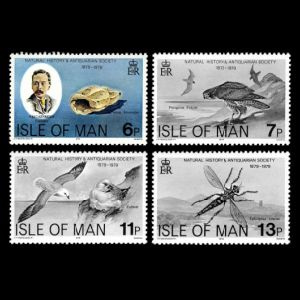 |
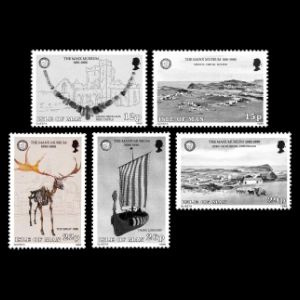 |
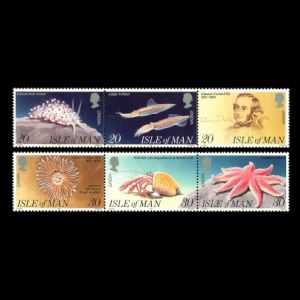 |
| 15.02.2006 "Isle of Man Society of Natural History and Archaeology" [4] | 17.02.2023 "Manx Wildlife Trust 50th Anniversary" [5] | |
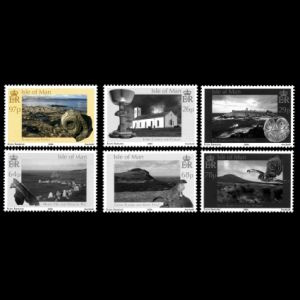 |
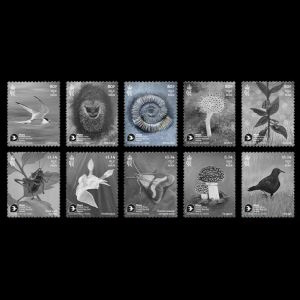 |
|
Notes:
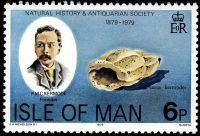
|
| Philip Moore Callow Kermode and fossil gastropod Nassa kermodei on stamp of Isle of Map 1979 MiNr.: 138, Scott: 142 |
Another object on the stamp is a fossil gastropod (the Gastropoda or gastropods are more commonly known as snails and slugs Nassa kermodei). The first gastropods were exclusively marine, with the earliest representatives of the group appearing in the Late Cambrian, 497 to 485.4 million years ago.
[2] The stamp with face value of 22p shows the Great Deer (Megaloceros giganteus) who was an inhabitant of Man during the Ice Age and became extinct in prehistoric times.
The Great deer, is an extinct species of deer in the genus Megaloceros and is one of the largest deer that ever lived. Its range extended across Eurasia during the Pleistocene, from Ireland to Siberia to China.
The skeleton on the stamp is the second complete skeleton discovered on Isle of Man. It was excavated at Close-y-Garey, St. John's in 1897. The articulated skeleton was originally displayed in the temporary museum at Castle Rushen in 1905 before being transported to the Manx museum in the 1950s, where it is still on display today. [R3]
[3] Stamp with face value of 30 p shows a fossil of an individual Solaster moretonis. This is a type of starfish which was first described by Edward Forbes. Edward Forbes appears on a second stamp in the set (face value of 20 p).
Very few species of the genus Solaster are known in the seas of the passing epoch. Solaster moretonis and Solaster endeca are both inhabitants of the European seas. They are many rayed star-fishes of considerable dimensions, and resemble in their shape the conventional figure of the sun. None had hitherto been found in the fossil state until the remarkable and unique starfish now for the first time figured and described was procured by Earl Ducie. It was found in a fawn-coloured freestone belonging to the Great Oolite (?) at Windrush Quarry, in Gloucestershire.
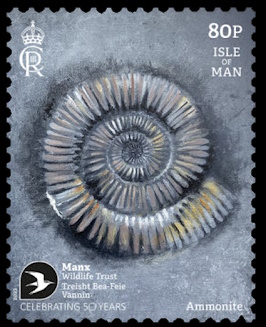 |
| Ammonite on stamp of Isle of Man 2023 - part of "Manx Wildlife Trust 50th Anniversary" set. |
[4] Stamp with face value of 97p., shows volcanic rock of Scarlett Point and Castletown with a fossil of Merocanites compressus ammonite in the foreground.
[5] One of the stamps from "Manx Wildlife Trust 50th Anniversary" set, shows an Ammonite.
"Ammonite fossil, Ammonoidea: Arguably the most recognisable of fossils and are the remains of an extinct marine mollusc. Scarlett, in the south of the Island, is known for its interesting geology and fossils along with incredible wildlife, all on display at the MWT Nature Discovery Centre there. Palaeontology helps direct conservation efforts through better understanding of the causes of extinction."
Some other stamps of Isle of Man to consider: contributors to Paleontology
| 09.03.2012 "The centenary of Scott's South Pole Expedition" [A1] | ||
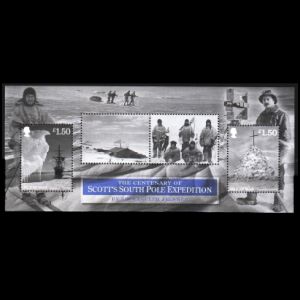 |
|
|
Notes:
[A1] The stamp with the face value of GBP 1.50 on the right side of the Souvenir Sheet, show the grave of Robert Falcon Scott.
Robert Falcon Scott is shown on the left side of the souvenir sheet and some scenes from his expeditions are shown in the middle.
Scott and his companions died on the second expedition. When Scott and his party's bodies were discovered, 16kg of Glossopteris (an extinct beech-like tree from 250 million years ago) fossils from the Queen Maud Mountains were found next to their bodies, which they had dragged on hand sledges.
These fossils were promised to Marie Stopes (shown on UK stamp in 2008) to provide evidence for Eduard Suess's idea that Antarctica had once been part of an ancient super-continent named Gondwanaland (now Gondwana).
More details are here.
References:
- [R1] Isle of Man: Wikipedia, WikiTravel, FlagCounter.
- [R2] Postal History and Philately of Isle of Man:
Wikipedia,
Links to official website of the Post Authority, stamp catalog and a list of new stamps of Isle of Man are here - [R3] Megaloceros giganteus (Great Deer): "First discoveries Megaloceros", BBC
Acknowledgement:
Dr. Peter Voice from Department of Geological and Environmental Sciences, Western Michigan University, for the draft page review and his valuable comments.
| << previous country | back to index | next country >> |
